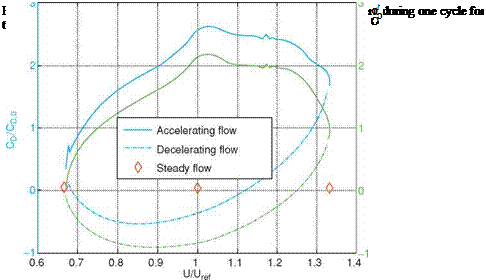Unsteady Phenomena at High AoAs
Vortex shedding causes more than just unsteadiness in aerodynamic performance. Cummings et al. [157] reported that, at large AoAs, the unsteady computations predict noticeably lower lift coefficients than do the steady computations. The Reynolds
 |
number in their study is higher than that of the MAV regime. Lian and Shyy [158] performed Navier-Stokes flow computations around a low AR wing under MAV flight conditions and found that the differences between the steady-state and the time-averaged lift are small, even at large AoAs in which unsteady phenomena such as vortex shedding are prominent. Nevertheless, the instantaneous flow structure varies substantially. Hence it can be misleading to simply examine the time-averaged flow field to estimate the MAV aerodynamic characteristics.
Figure 2.38 compares the pressure coefficients of a MAV wing designed by Ifju and co-workers[17], which are based on time-averaged unsteady computations and steady-state computations. In this design, the camber gradually decreases from the root toward the tip of the wing. Hence, the flow tends to separate first in the root region. At the AoA = 6° the time-averaged pressure coefficient closely matches the steady-state result. The time-averaged value yields a smooth pressure distribution; the steady-state result indicates a small recirculation zone. As the AoA becomes higher, there is little difference in the leading-edge region; on the contrary, clear differences exist in the separated regions.











